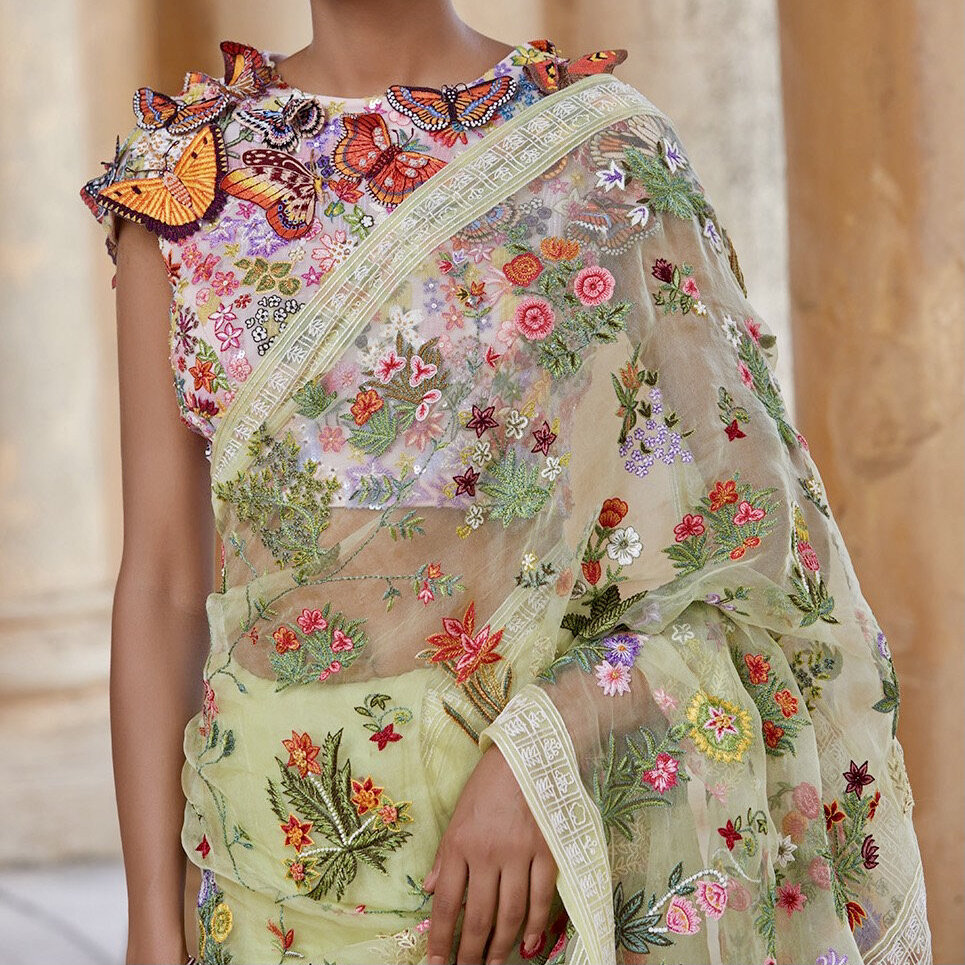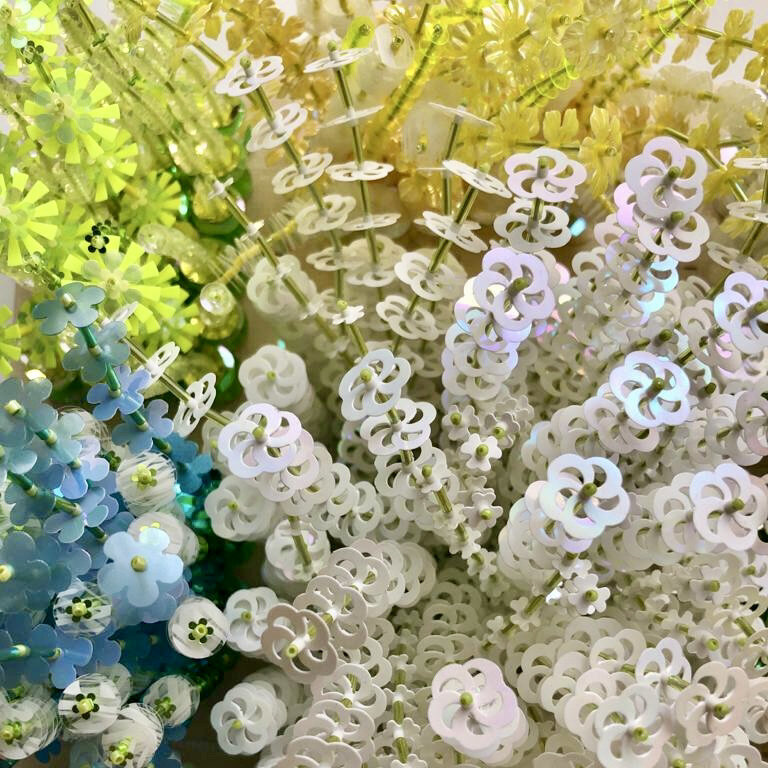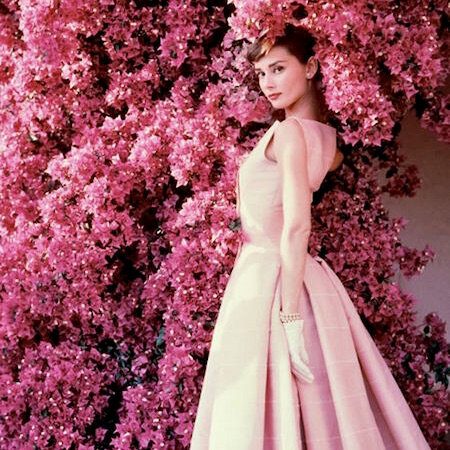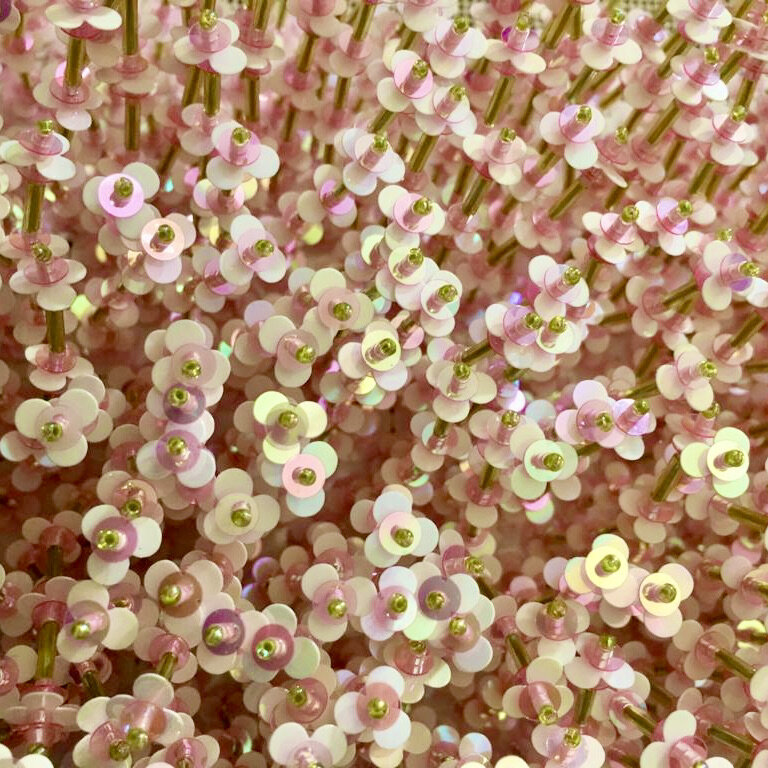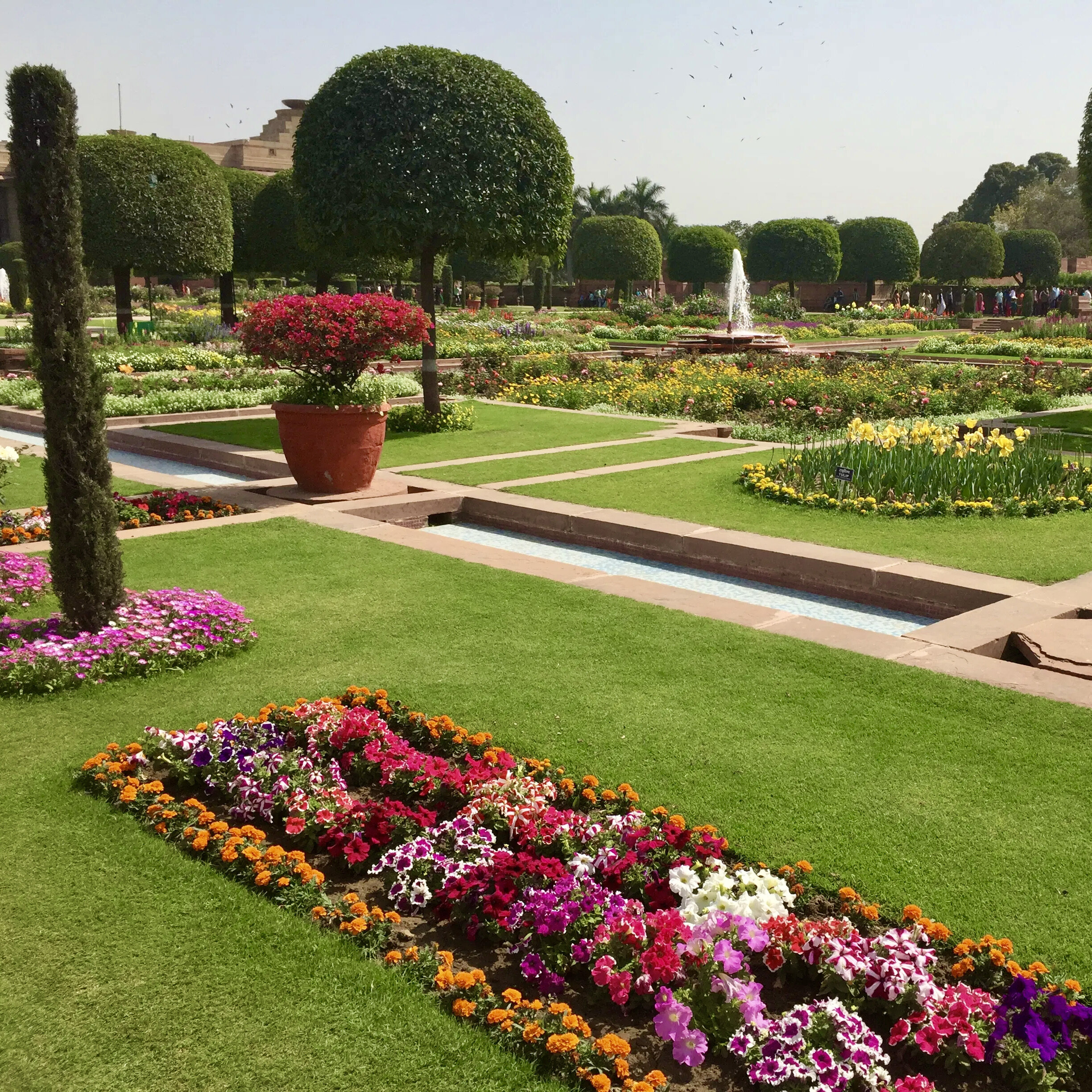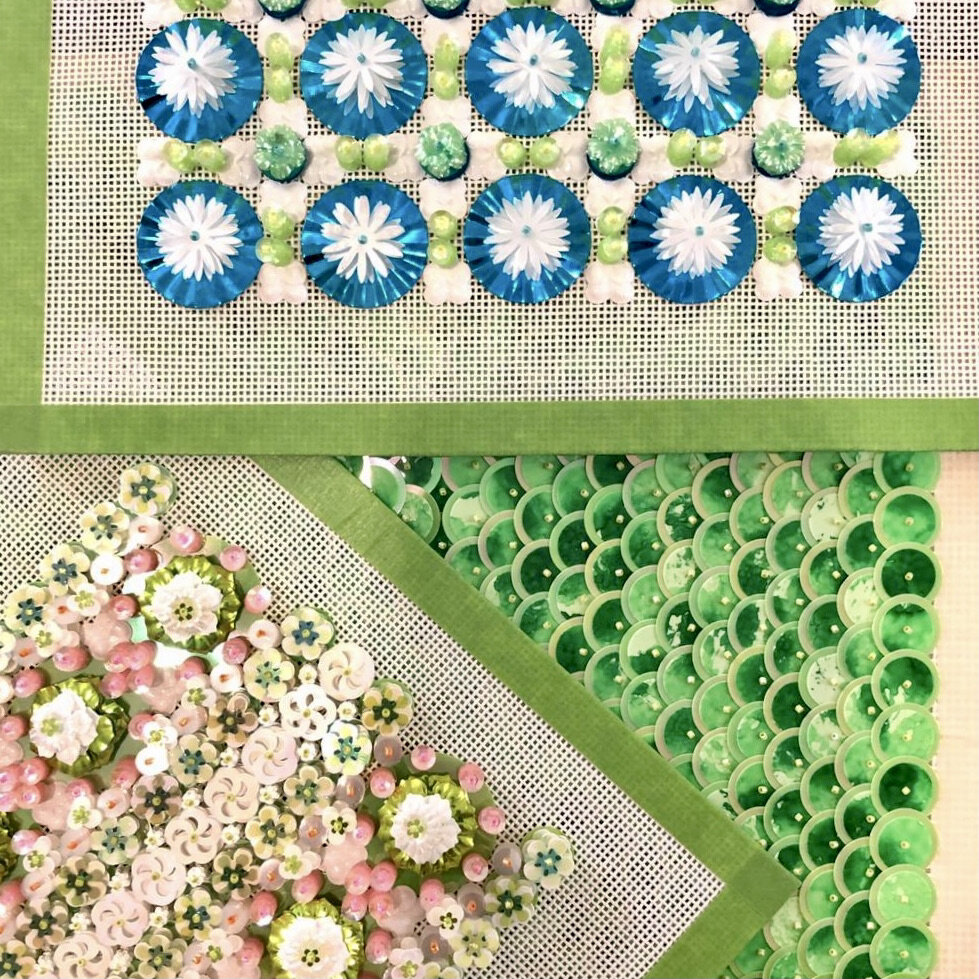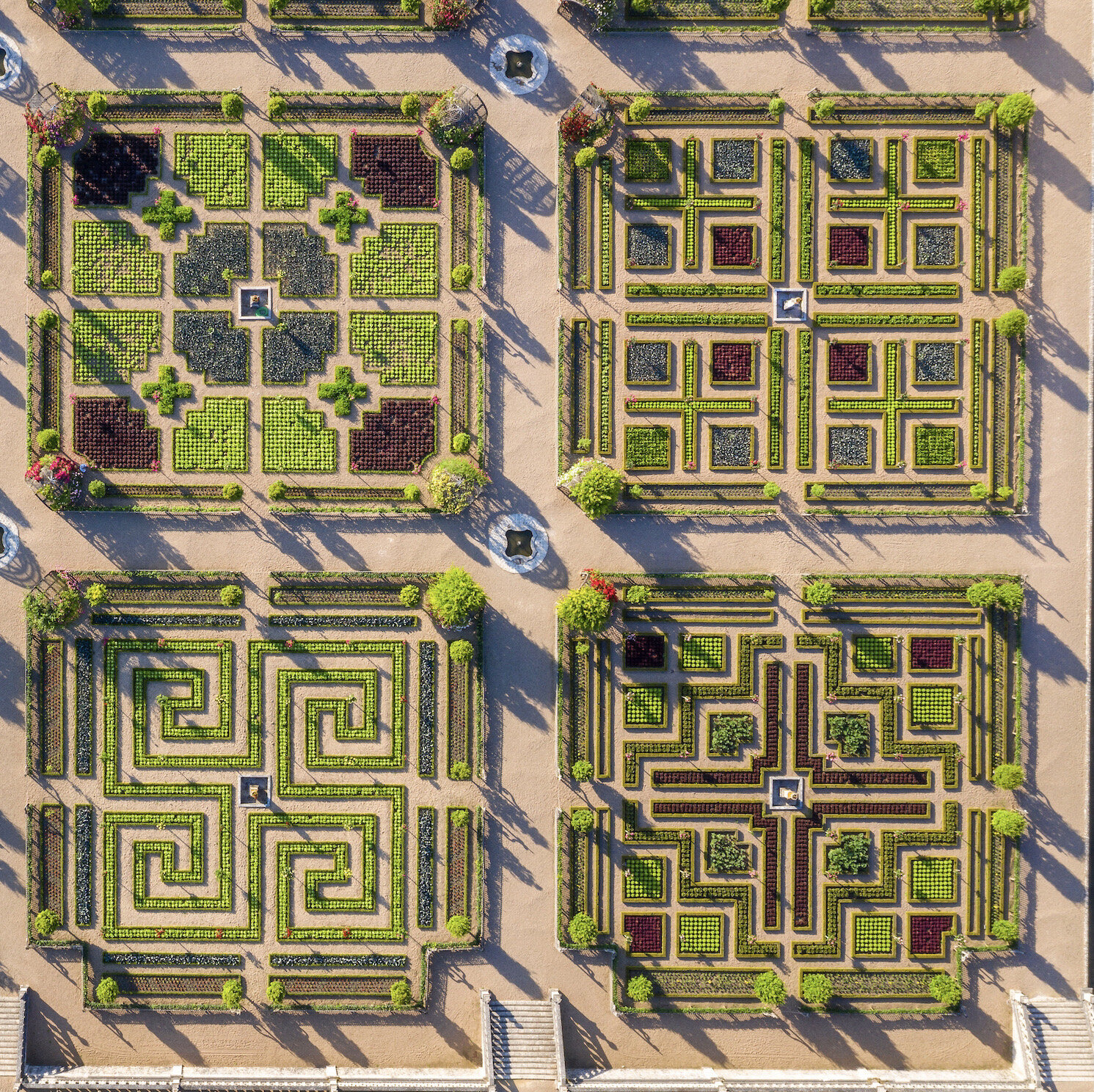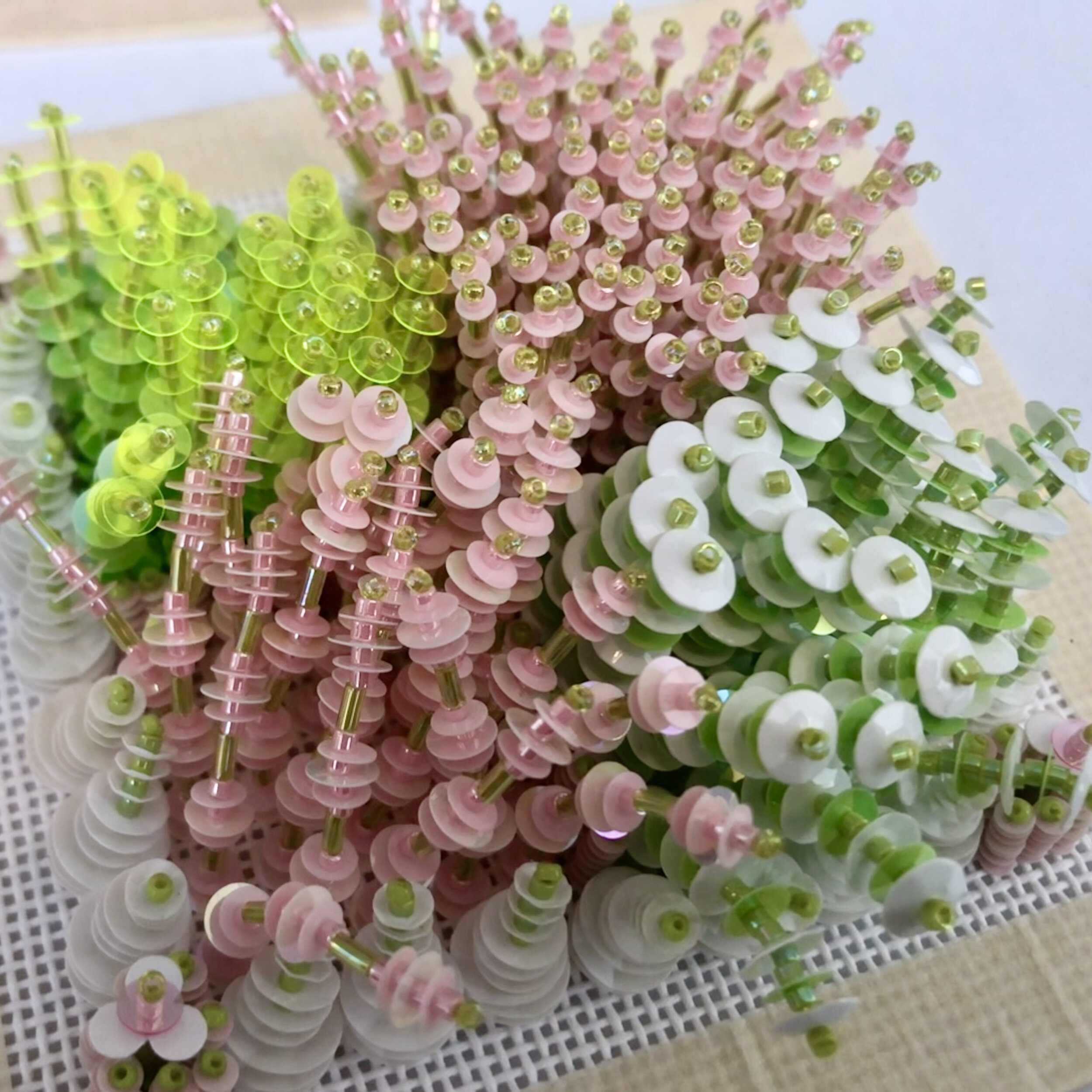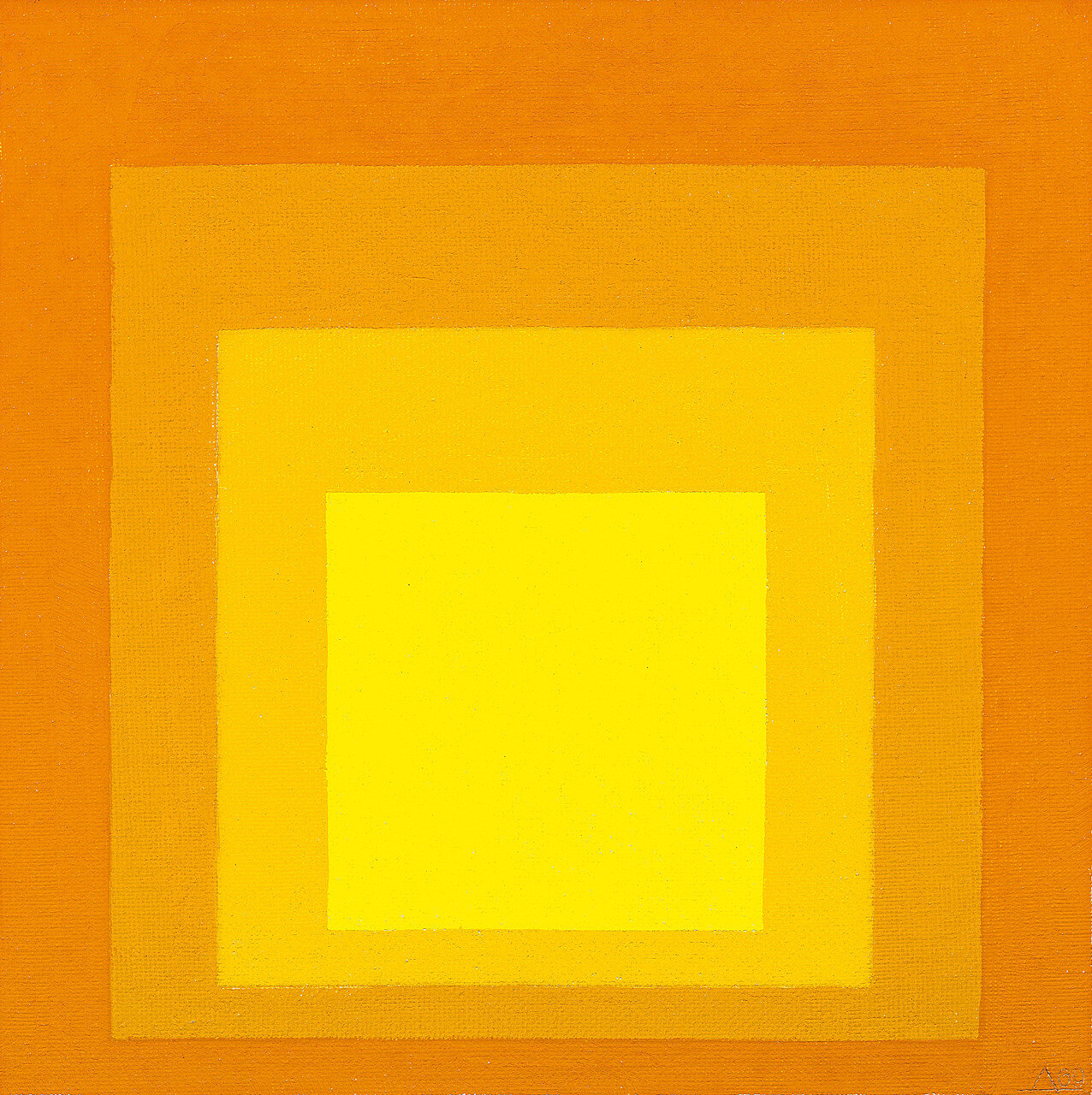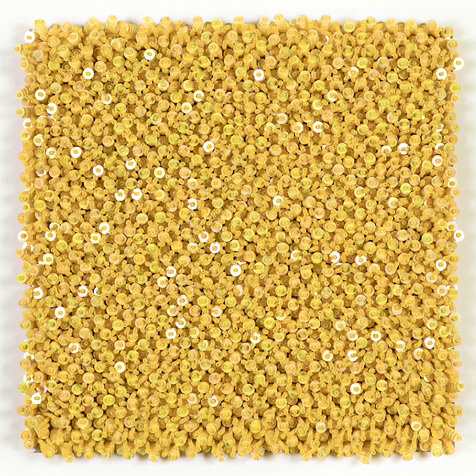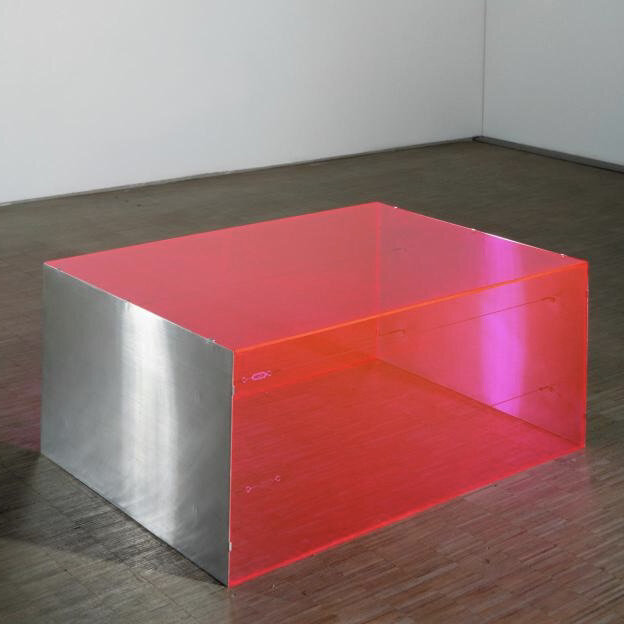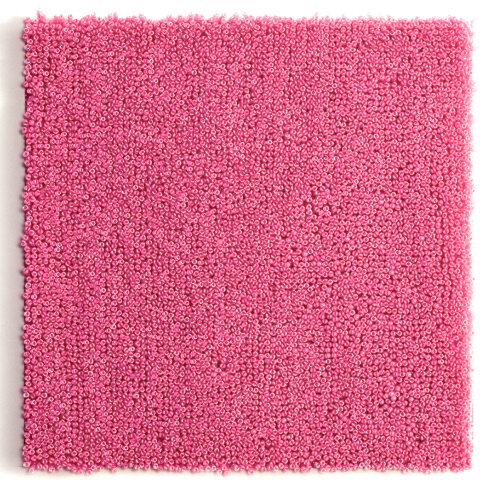From India to France
“A piece of material has a life. You must never upset it if you want the material to speak,” said Hubert de Givenchy, the paragon of simple elegance, with his innate sense of color and silhouette.
Devi’s respect for fashion started with her mother’s Indian saris, where each one told a story. Studying the history of the sari further, she learned that in Ancient India, to cut fabric was considered impure. In Haute Couture, she found a shared purity in lines and details, a mutual care for material and embroidery as well as a reciprocal love for colours and beauty, that together define elegance and poise from ancient India to modern Paris.
This vision of beauty, combining beautiful texture, natural harmony and sprezzatura, is instilled in Devi’s embroidery creations, and brought to vibrant life in the handmade Haute Couture sequins and Japanese beads with which she expresses all her playfulness and versatility.
In other words, fabric as a garment was indicative of respect. She found this same respect for a garment when studying French Haute Couture.
Photos : Lotus Pond, Couture Festive collection by Rahul Mishra (©Rahul Mishra), bouquet sample by Devi Atelier (©Devi Atelier), Audrey Hepburn in Givenchy by Norman Parkinson (©Proud Galleries, London, 2018), spring flower panel by Devi Atelier (©Devi Atelier).
Gardens
Devi started studying the principle of ‘jardins à la française’ after a private tour of Versailles with garden historian Gabriel Wick. Under his guidance, she became enchanted by the elegant artfulness of the late 17th century ‘parterres de broderie’ with their division of paths and beds creating an embroidery-like pattern of green flowing ribbons.
Later, her research into the art form led her to the Château de Villandry in the Loire Valley, where she found the symmetrical squares and geometrical motifs of the 18th century style gardens to be equally fascinating and inspiring.
Discovering Villandry’s motifs, Devi recalled the magnificent Mughal gardens that she had often admired in the old miniature paintings decorating her grandparents’ home.
She found herself intrigued by the notion of cross-cultural influences arching across great expanses of time. One fascinating example of this, to her, was Rashtrapati Bhavan, designed by Edwin Lutyens in the early 20th century. The Delhi palace’s famed gardens draw inspiration from the wonderful Mughal gardens of Jammu, Kashmir, and Agra, yet encapsulating Raj-era elements of the English flower garden. Edwin Lutyens’s wife, Lady Emily, described the garden as a paradise: “…flowers are set in such masses, producing a riot of color and scents, that, when with the fountains playing continually, there is not the least sense of stiffness.”
Devi’s miniature gardens are made with eco-responsible sequins and beads, celebrating savoir-faire, heritage and the art of gardening across continents.
Photos : Rashtrapati Bhavan (©vak1969), samples by Devi Atelier (©Devi Atelier), French gardens at Château de Villandry (©Hervé Lenain), work in progress by Devi Atelier (©Devi Atelier).
Abstract Art
It is only natural that Devi’s mathematical mind would have been so receptive to the artistic power of geometry she discovered in the Abstraction and Minimalism of artists such as Josef Albers and Donald Judd.
Her first foray into art creation was Algorithms, a tribute to Albers’ ‘Homage to the Square’, itself a series of works composed of four superimposed squares in four hues applied with a palette knife onto a white panel. The shimmering color contrasts and the illusion of receding and advancing planes challenge the viewer’s faculties of visual reception. Devi gave her tribute to Albers’ work a feminine touch by embroidering monochromatic sequins and beads on a white canvas. Algorithms won first place in the Hand & Lock prize competition.
In Donald Judd’s artworks, Devi found the freedom to explore and create, sensitive to his investigation of “real space” or 3D, and his emphasis on whole, unified shapes, untethered from the traditional frameworks of painting and sculpture.
Photos : Homage to the square by Josef Albers (©designishistory.com), Algorithms, Yellow by Devi Atelier (©Devi Atelier), Specific Object by Donald Judd (Sans titre, ©centrepompidou.fr), Algorithms, Fuchsia by Devi Atelier (©Devi Atelier).

